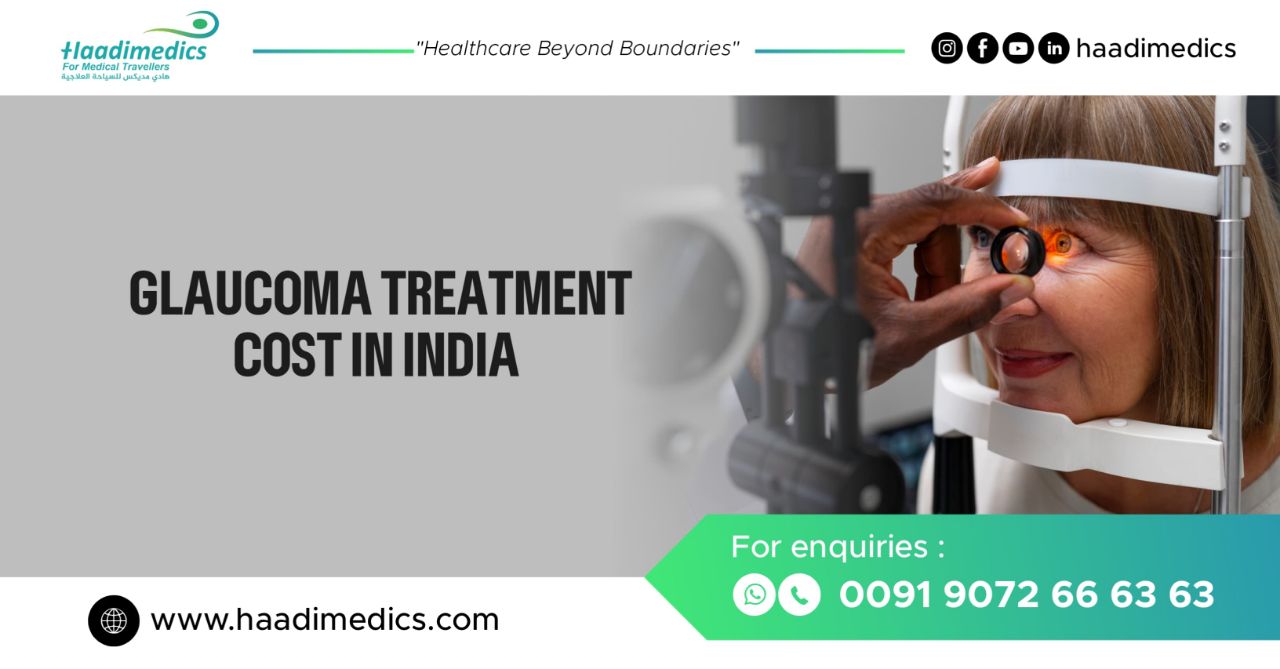Glaucoma, often referred to as the "silent thief of sight," is a group of eye conditions that damage the optic nerve, leading to vision loss and blindness if left untreated. In India, where glaucoma is a significant public health concern, remarkable advancements have been made in its treatment. India has made substantial strides in the diagnosis and management of glaucoma, owing to advancements in technology, widespread awareness campaigns, and the expertise of ophthalmologists.
What is Glaucoma and its Symptoms?
Glaucoma is a group of eye diseases characterized by increased intraocular pressure (IOP), which damages the optic nerve and leads to vision loss.
Symptoms of glaucoma often go unnoticed until the condition reaches an advanced stage, making regular eye examinations crucial for early detection.
Glaucoma treatment aims to lower IOP and prevent further damage to the optic nerve, thereby preserving vision and halting disease progression.
Risks Associated with Glaucoma Treatment
While glaucoma treatment is generally safe and effective, it may involve certain risks and complications, including:
1. Eye Irritation: Some patients may experience mild discomfort or irritation following treatment, which usually resolves on its own.
2. Infection: Surgical procedures for glaucoma, such as trabeculectomy or tube shunt implantation, carry a slight risk of infection.
3. Visual Disturbances: Certain medications used to lower IOP may cause temporary visual disturbances, such as blurred vision or sensitivity to light.
Preparation for Glaucoma Treatment
Preparation for glaucoma treatment typically involves:
1. Comprehensive Eye Examination: Patients undergo a thorough eye examination to assess the severity of their condition, measure IOP, and evaluate optic nerve damage.
2. Medical History Review: Patients provide their medical history, including family history of glaucoma or other eye conditions, to help guide treatment decisions.
3. Discussion of Treatment Options: Patients discuss various treatment options with their ophthalmologist, including medications, laser therapy, or surgical interventions, to determine the most appropriate course of action.
Procedures
Treatment options for glaucoma may include:
1. Medication: Eye drops or oral medications may be prescribed to lower IOP and prevent further optic nerve damage.
2. Laser Therapy: Procedures such as selective laser trabeculoplasty (SLT) or laser peripheral iridotomy (LPI) may be performed to improve drainage of fluid from the eye and reduce IOP.
3. Surgery: In cases where medications and laser therapy are ineffective, surgical interventions such as trabeculectomy, tube shunt implantation, or minimally invasive glaucoma surgery (MIGS) may be recommended to lower IOP and preserve vision.
Best Hospitals in India for Glaucoma Treatment
- Sankara Nethralaya, Chennai
- Aravind Eye Hospital, Madurai
- LV Prasad Eye Institute, Hyderabad
- Dr. Agarwal's Eye Hospital, Chennai
- Shroff Eye Centre, Delhi
- Center for sight, New Delhi
- Bharti Eye Hospital, New Delhi
- Apollo Hospitals, Greams Road, Chennai
- Eye Q Hospital, Gurgaon
- Fortis Memorial Research Institute, Gurgaon
- Indraprastha Apollo Hospital, New Delhi
Best Doctors for the Treatment
- Dr. Dharitri Samantaray
- Dr. Deependra V Singh
- Dr. Viswanathan P
- Dr. Pratik Ranjan Sen
- Dr. Sunaina Arora
- Dr. Dheeraj Gupta
Cost Comparison
India – INR 25000(USD 299)
Turkey – USD 125
Thailand – USD 125
FAQ
1. Is glaucoma treatment covered by health insurance?
Some health insurance plans may cover a portion of the cost of glaucoma treatment, including medications, laser therapy, or surgical procedures. Patients are advised to check their insurance coverage and consult with their provider for details.
2. Can glaucoma be cured completely?
While there is currently no cure for glaucoma, timely treatment can help manage the condition, prevent vision loss, and preserve remaining vision.
3. Is glaucoma hereditary?
Yes, certain types of glaucoma, such as primary open-angle glaucoma (POAG) or angle-closure glaucoma, may have a genetic predisposition. Individuals with a family history of glaucoma are at higher risk and should undergo regular eye examinations.
4. How often should I undergo follow-up appointments for glaucoma treatment?
Patients with glaucoma should undergo regular follow-up appointments with their ophthalmologist to monitor IOP, assess optic nerve health, and adjust treatment as needed.
5. Can lifestyle changes help manage glaucoma?
Healthy lifestyle habits such as regular exercise, maintaining a balanced diet, avoiding smoking, and managing stress may help lower IOP and slow the progression of glaucoma.
6. Can glaucoma treatment restore lost vision?
While glaucoma treatment aims to prevent further vision loss, it cannot reverse vision loss that has already occurred. Early detection and treatment are crucial to preserving remaining vision.
7. Are there any alternative treatments for glaucoma?
While medications, laser therapy, and surgery are the primary treatment options for glaucoma, some alternative therapies such as acupuncture or dietary supplements may be explored under the guidance of a healthcare professional. However, their effectiveness in managing glaucoma is not well-established.
8. Is glaucoma more common in certain age groups or demographics?
Glaucoma can affect individuals of all ages, but it is more commonly diagnosed in older adults, particularly those over the age of 60. Individuals of African, Hispanic, or Asian descent are also at higher risk of developing glaucoma.
9. What are the long-term effects of untreated glaucoma?
Untreated glaucoma can lead to progressive vision loss and eventual blindness. As the condition advances, peripheral vision may be affected first, followed by central vision, leading to significant impairment in daily activities.
10. Can I continue using contact lenses or eyeglasses after glaucoma treatment?
In most cases, patients can continue using corrective lenses after glaucoma treatment to improve vision. However, it is essential to follow the recommendations of your ophthalmologist regarding lens wear and care to minimize the risk of complications.


Comments